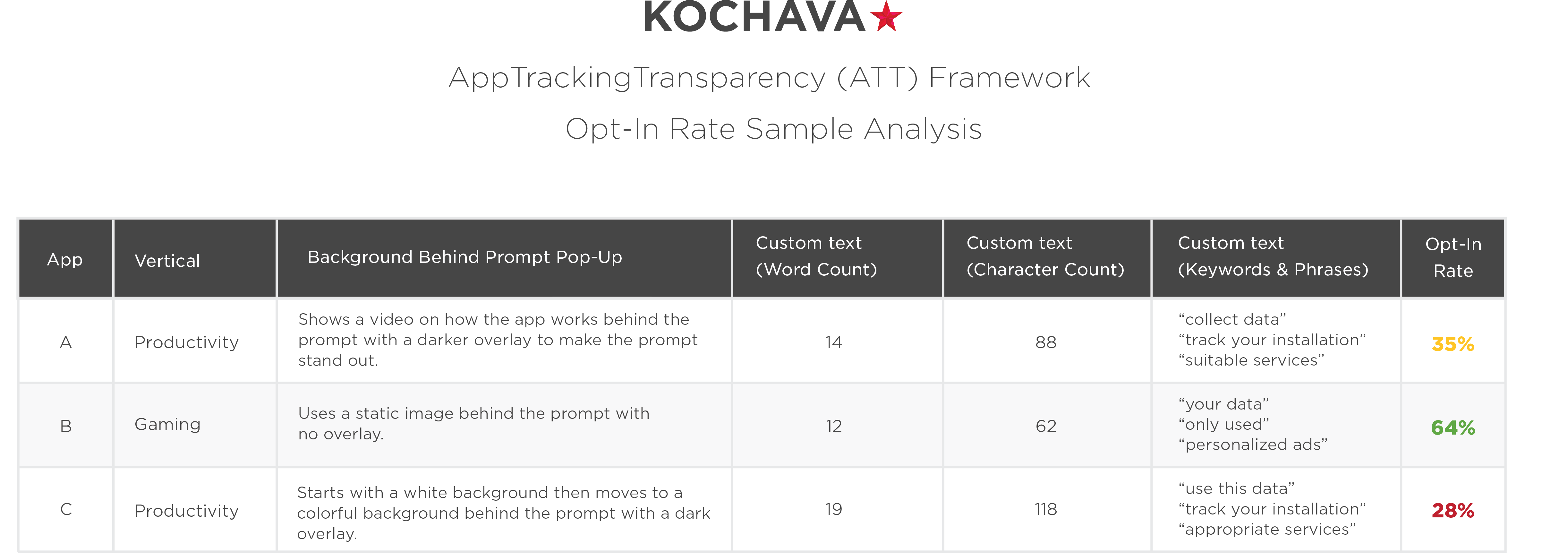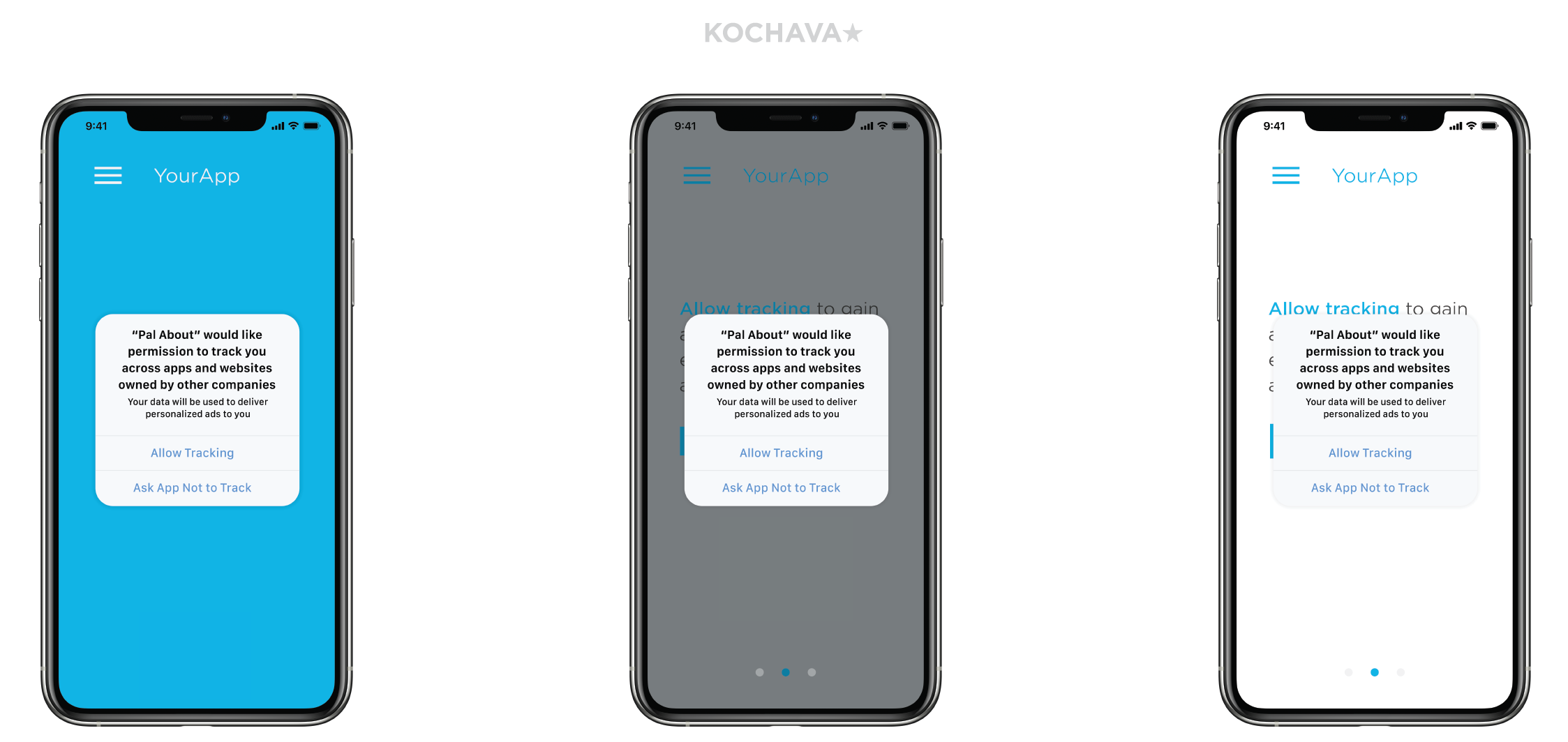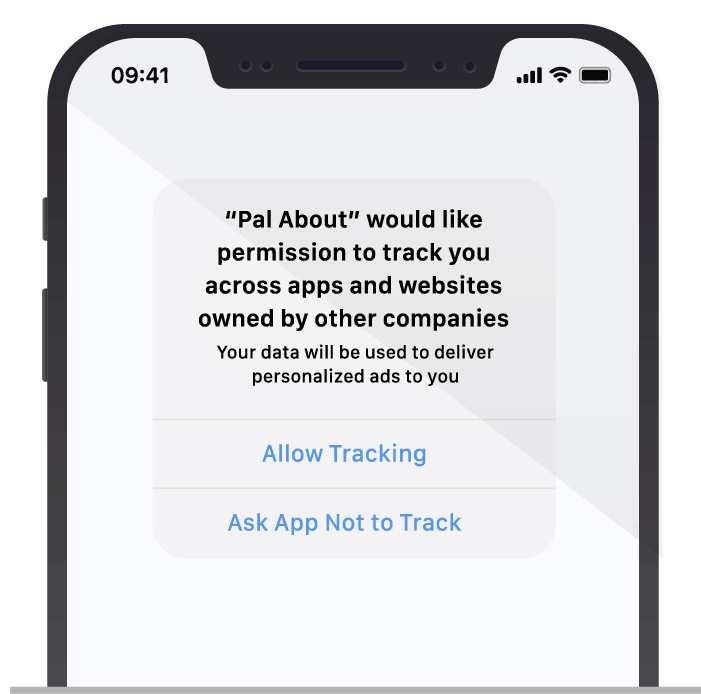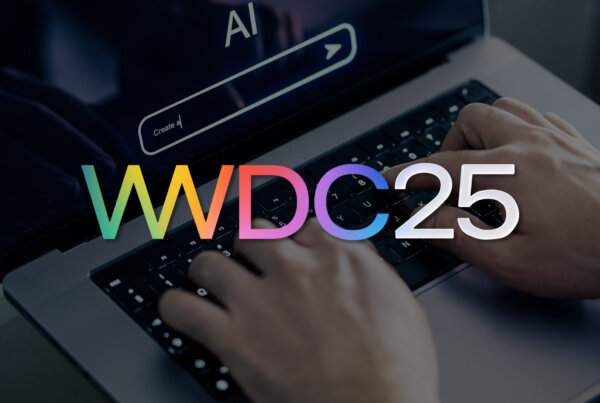Create the optimal AppTrackingTransparency (ATT) framework prompt
UPDATE: Since the original release of this blog post, new information indicates that Apple will not allow a soft-prompt/pre-prompt in advance of the main prompt for the AppTrackingTransparency (ATT) framework. This blog post has been updated accordingly. Please see our April 1st blog post here for more information.
It is now 2021, the year of iOS 14, and Apple’s required privacy framework. With the AppTrackingTransparency (ATT) framework taking effect in early Spring 2021, the question remains—are you prepared?
The AppTrackingTransparency (ATT) framework gives users the option to opt-in to app tracking. Gaining user consent makes the IDFA available and keeps the attribution process similar to how it operates currently. If a user opts out, however, access to the IDFA is blocked; further, user and device-specific data cannot be used for advertising measurement and targeted advertising. As an advertiser, getting your user to consent to tracking is highly beneficial. But how exactly do you get your users to opt-in? Our team has compiled key considerations to keep in mind as you begin implementing the ATT framework and structuring your prompt strategy.
Learnings from a small sample
UPDATE: As of April 16, 2021, the average opt-in rate across all apps that have implemented ATT and measure with Kochava is 43%, up from 41% from the week prior.
To begin, we analyzed a small sampling of apps from clients who have already implemented and begun prompting for ATT. Focusing on three specific apps, the varying opt-in rates are as low as 28% and as high as 64%. This is far above the worst-case scenario of 5%-15% that had been predicted by many in the industry. Thankfully, from this sample set, we can extract valuable insights to steer you in the right direction.
Note: All of these apps prompted for ATT during first launch/first open.

This table shows that the app B with the highest opt-in rate (64%) falls under the gaming vertical. It uses a static background image behind the prompt with no overlay. The prompt contains the least amount of words (12) and the prompt language does not contain the word “track” or “collect” in any way. Whereas the other two apps mention tracking the user’s installation ad source.
While the sample size is small, these are valuable insights in advance of widespread enforcement. Here are three key takeaways:
- Keep your prompt short
- Explain the benefit(s) of opting in*
- Use a static image as a background behind the prompt
* “Tracking” is a very commonly used term with a wide variety of definitions, and it may have a negative connotation. When forming your consent prompt, be as transparent and clear as possible by explaining to your users what their data will be used for and emphasize the benefits of opting in (eg, personalized ads). It’s also good to emphasize “only used for” as it communicates to the user that you’re giving them the full picture.
Now let’s look to other questions and considerations that should be on your mind as you craft your ATT strategy.
What should I include in my consent prompt?
You can choose to utilize Apple’s default prompt which has the option for language customization as well. Whether you are solely using Apple’s default prompt, or both, make it clear what you are asking of your users. Use simple, concise language so that your users don’t have to read too much to understand what is needed of them. Choose your colors carefully to make your users feel at ease, and consider incorporating a video or graphic to grab the attention of your users.
Language
The language of your prompt needs to be taken into account. Knowing your audience and how they respond to certain communication styles will be helpful when deciding on the language of your personalized prompt.
Colors
When formatting your prompt, mindfully choose colors and fonts that reflect your brand and appeal to your users. Shades of blue reflect a soothing, reliable, and trustworthy mood; whereas reds reflect survival and power. Knowing what you are trying to convey and the environment you want to create will have an impact on your color choices.

Solid Background
Overlay
No Overlay
Graphics
Instead of a written prompt, you can choose to include a video that explains what tracking is or why you are asking for consent. Adding friendly or informative graphics or images could also grab your user’s attention.
Where and when should I ask for consent?
The User Journey Factor
Timing is everything. So what is the ideal moment to ask for consent? Every app is different and how a user interacts with your app is unique. Understanding your user’s journey is an important first step when determining the placement of your prompt. Where you decide to display the consent prompt could vary between app verticals. An eCommerce app might not want to display the consent prompt until the user has started viewing products, informing users it will help them suggest more relevant products and offers moving forward. A gaming app might want to gain consent once a user has finished the tutorial or completed their first level of gameplay. Understand your app and at what point your users perceive value from your app and are most likely to opt-in as a result.
The Attribution Factor
Another factor at play in the timing of your prompt is what level of attribution data you desire, particularly for your paid media running on third-party inventory. If you still want real-time, row-level attribution data from Kochava on the subset of your users who opt-in via ATT, then you must configure your software development kit (SDK) integration with Kochava to ensure the prompting has occurred before the install payload gets sent for attribution. The maximum time you allot for the SDK to wait for the outcome of your ATT prompt is customizable. For complete details on the configuration options, visit our related support documentation.
Regardless of the timing of your ATT prompt or a user’s opt-in status, you will be able to get anonymous, aggregated, and delayed attribution data via Apple’s SKAdNetwork on your in-app iOS campaigns. Kochava has developed robust advertiser support for the SKAdNetwork, to help you gain maximum performance insights for effective optimization.
Even for users who opt-out or haven’t been prompted in time, you can obtain real-time and row-level Kochava attribution for your owned media and cross-promotional efforts across the apps in your publisher account. Apple’s policies prevent you from “linking user or device data collected from your app with user or device data collected from other companies’ apps, websites, or offline properties,” but linking user or device data among your own apps, websites, or offline properties is allowed.
For a thorough breakdown of how user ATT opt-in status impacts your attribution options, read our recent blog post.
Don’t incentivize users
Per Apple’s guidelines, there should be no forms of incentivization when it comes to getting users to consent to tracking. Your app should not require opt-in to gain certain functionality or features. In their Privacy Policy FAQ, Apple has made it clear that “apps cannot attempt to manipulate, trick, or force people to consent to unnecessary data access.”
You want your users to consent because they want to, not because they feel pressured to. Allowing your users to interact with your app to its full capacity will encourage loyalty with your app and brand. In the future, they might consent to tracking and you want to cultivate that possibility.
Educate: Give your users a reason to opt-in
No matter how well worded or how perfectly timed your consent prompt is, no one likes getting a pop-up when playing a game or making a purchase. Most of the time, the only motivation is to agree or disagree with them to get them to go away.
When something like this pops up, what are your thoughts?

The questions that arise are what is this prompt wanting me to do and why is it asking me to do this? A user who doesn’t understand how tracking affects them (most app users) will be quick to select “Ask App Not to Track.” They don’t want to share their data with the world. So, how do you get the average app user to opt-in to tracking with such an inherent bias?
Education.
An important step, before the ATT framework becomes mandatory, is to educate your users. Send out emails, share posts, interact with them so they feel prepared for the changes that are coming. Transparency is key when educating your users. Tell them what you will be tracking and the benefits of opting in.
Why your users should opt-in to tracking: What you should tell them
The word “tracking” sounds scary. There is a negative connotation when it comes to data sharing and many people don’t know what it entails and why it’s done. Below are some examples of how certain tracking benefits consumers every day.
- Tracking a user’s data aids in the accuracy of the content they see. Advertisements are more personalized to the user which allows them to discover more products and services of interest.
- Allowing location tracking helps banking apps determine if fraud is occurring. If user X is on the West Coast but their card number was used in New York, there is a strong possibility the credit card information was stolen.
- Gathering information about a user and their journey through an app provides important information about how the app functions. Tracking helps optimize the app and makes it more user friendly.
No consent? No problem
What about the portion of your audience who don’t opt-in? Will that leave you with no campaign performance insights or attribution? In the absence of user opt-in, here are the avenues still open to you to maximize your marketing efforts.
Utilize SKAdNetwork: Gather safe, anonymous, deterministic attribution with SKAdNetwork. While it won’t give you granular attribution data at the user/device level, Kochava has built out turnkey SKAdNetwork support for advertisers with conversion values that maximize the insights advertisers can glean from their SKAdNetwork efforts. Learn about how we can help you succeed on the SKAdNetwork.
- Integrate cross-promotion: If you have a large portfolio of apps in your iTunes publisher account, run cross-promo campaigns. Cross-promo is considered owned media, and deterministic attribution is allowed by Apple using the identifier for vendor (IDFV). In a cross-promo scenario, you’re only linking data between your own apps, websites, etc., and not that of another company. That means you’ll have deterministic attribution regardless of ATT opt-in status of the user.
- Bolster other owned media: Utilize your owned media channels such as email, text, social, brick-and-mortar display, web, and beyond. You can leverage Kochava SmartLinksTM technology with App Clips to get deterministic attribution on everything from quick response (QR) code scans to smart banner clicks on your website. Even drive effective retargeting in the absence of an IDFA through a push notification platform.
Testing, testing, 1, 2, 3
All of the above considerations should be taken into account when establishing your ATT prompt strategy, but a lot is still unknown. Start testing some of these tactics now to get a better understanding of how your users respond to different types of prompts, where they go within the app, and their level of education around user tracking. When Apple makes these privacy rules a requirement, you should have some more insights into getting your users to opt-in to tracking. Even after these requirements are in place, keep testing different scenarios to find the most effective solution.
Summary
- Learn about your users journey to determine what, where, and when you should include in your ATT prompt.
- Read Apple’s specific rules and guidelines when it comes to consent to ensure proper implementation.
- Educate your users so that they understand what they are consenting to and why it’s beneficial to them.
- If you are unable to gain user consent, don’t worry. There are alternative methods to continue understanding campaign performance and drive further engagement.
- Creating the most effective strategy to gain user consent will take some time so make sure you’re performing your own testing now and continue to test even after enforcement.
Get a free consultation on your ATT strategy, SKAdNetwork adoption, and other ongoing impacts from iOS 14. Contact us today.




